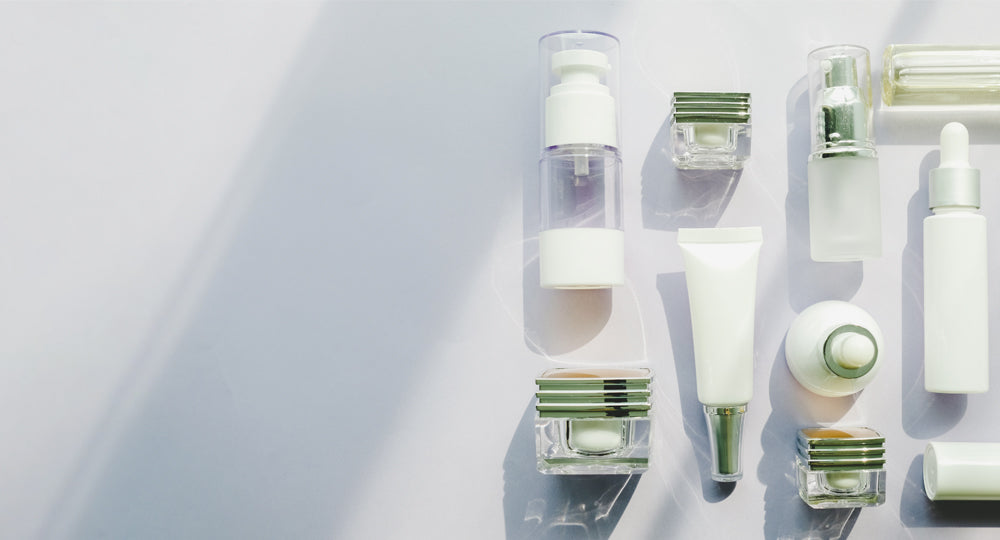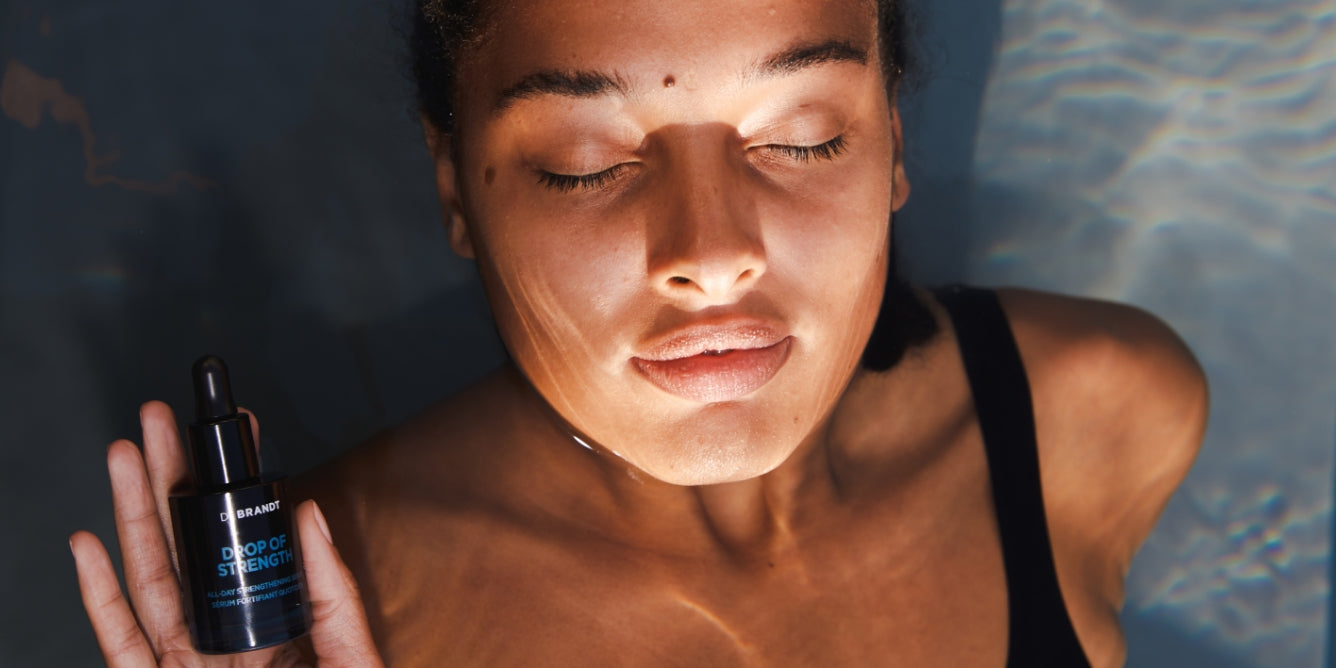
They say variety is the spice of life, but with so many options and new skincare brands AND products coming out every day - how are you supposed to find your go-to skincare products? Google “face moisturizer” and there are 2,000,000,000 search results. 2 BILLION! Once you’ve narrowed down your options through research or recommendations, you’ll have to make a choice. And more likely than not, you’ll be looking for what a product claims to do.
But what’s in a claim? At Dr. Brandt, we like to say “take the doctor home” when consumers purchase our products; its intent is to communicate the value of our brand and our products. It’s purely emotional and helps guide what you think about our brand and how you feel about it, so it doesn’t have to be substantiated.
Every brand in the world does this, and you know all the classics:
- “A diamond is forever”
- “Melts in your mouth, not in your hands”
- “Breakfast of Champions”
Those kind of advertising claims and slogans don’t tell you about a singular product, so when it comes to skincare, claims can go beyond the basics and get into ingredients, technologies and additives. Skincare claims most commonly fall into one of 4 kinds of claims. Here, we explain the regulations and processes around claims.
What is a Cosmetic Claim?
A claim is basically a statement made about a product’s ingredients or functions. Claim reading can be challenging; you might see a label with 30% of some chemical you can’t pronounce and how much will it help wrinkles, but do you really understand it? Plus, skincare isn’t like lipstick, you don’t usually get an immediate payoff; most skincare products take about 4-6 weeks before you start seeing visible changes in skin.
Using our newest product, C Scription, let’s break down what’s being said. And there is A LOT to say about this amazing product.
C Scription
A fast-absorbing, ultra-concentrated serum with 20% THD-ascorbate + 4% hexylresorcinol complex + 1% plankton extract complex to synergistically brighten, fade dark spots, and even the complexion while boosting collagen for reduced lines & wrinkles and firmer-looking skin.
For all skin types.
DERMATOLOGIST-TESTED.
NON-COMEDOGENIC.
HYPOALLERGENIC.
CLINICALLY TESTED.
VEGAN.
TESTED ON SENSITIVE SKIN.
RESULTS TO EXPECT:
- Brightens skin tone and fades dark spots
- Boosts collagen production for firmer looking skin, while improving the look of fine lines and wrinkles
- Protects against free radicals and signs of photo-aging
AFTER 7 DAYS:
- 91% reported product evens skin tone and texture leaving the skin looking more luminous and radiant.*
- 82% showed reduction in skin color variation.**
AFTER 4 WEEKS:
- 100% presented improvement in skin firmness.**
AFTER 8 WEEKS:
- 88% reported product reduces the appearance of dark spots.*
- 91% reported product improves the appearance of fine lines and wrinkles.*
* Self-assessment test conducted on 34 volunteers.
** Instrumental evaluation conducted on 34 volunteers.

Claim Type #1:
Physio- Chemical Characteristics
These kinds of claims refer to the physical and chemical properties of products. It can be about the texture, appearance, or even the smell of a product.
The claim is that C Scription is a “fast-absorbing, ultra-concentrated serum.”
Claim Type #2:
Chemical Analysis
These claims refer to the chemical makeup of a product and typically the active ingredients that are going to enact a change.
The claim is that C Scription is made with “20% THD-ascorbate + 4% hexylresorcinol complex + 1% plankton extract complex”
It’s even on the packaging!
Claim Type #3:
Product Performance
These kinds of claims can be made after conducting laboratory or consumer panel tests. They are usually accompanied by the numeric results.
The claim is that after 8 weeks, the results for C Scription were:
- 88% reported that the product reduces the appearance of dark spots
- 91% reported that the product improves the appearance of fine lines and wrinkles
Claim Type #4:
Customer Preference
These claims refer to preference or perception of the product and its results
The claim is that C Scription is “a brightening serum” and “supports collagen for firmer looking skin”

The main common criteria for cosmetic claims
Under the law, information on cosmetic labeling, including claims, must be truthful and not misleading. This is the main common criteria.
It is up to cosmetics companies to ensure that their products claims are truthful and supported by clinical testing data since they are not required to be reviewed and approved by any regulatory authority before they are sold. However, once a product hits the market, multiple agencies are known to review product claims and will take action against companies suspected of making claims that are untruthful or misleading. Those agencies are:
- The U.S. Food and Drug Administration (FDA), the federal agency of the Department of Health and Human Services that is responsible for protecting the public health by ensuring the safety, efficacy, and security of drug products.
- The Federal Trade Commission (FTC), the federal agency that enforces federal consumer protection laws that prevent fraud, deception and unfair business practices.
- The National Advertising Division (“NAD”), part of the Council of Better Business Bureaus. NAD independently monitors and reviews national advertising for truthfulness and accuracy. It also acts as the advertising industry's self-regulatory body, which offers a vigorous, though voluntary, dispute resolution process for advertisers.
Some example of common cosmetic claims include:
- Reduces the appearance of fine lines and wrinkles in 10 days
- Long-term hydration
- Visibly brightens skin

Cosmetic product vs drug claims
How does the law define a cosmetic?
Cosmetic products, as defined by the FDA, are products that are intended to be applied to the body for cleansing, beautifying, promoting attractiveness, or altering the appearance. It includes skin moisturizers, perfumes, lipsticks, fingernail polishes, eye, and facial makeup preparations, cleansing shampoos, permanent waves, hair colors, and deodorants.
The law does not require labeling on such products to have FDA approval before the product hits the market, and there is no list of FDA-approved claims for cosmetics. It is the responsibility of cosmetics formulators and manufacturers to ensure that all claims—including the copy that appears on all labeling, advertising and social media—are truthful and supported by clinical testing data, perception questionnaires, scientific documentation, or a combination thereof. Both the FDA and FTC are known to send warning letters and take action against companies if unsubstantiated or misleading claims are found. These often include claims that are considered in-line with drugs. These could be products like creams that claim to treat diseases, anti-aging products that claim outrageous wrinkle-free results, or cosmetics that make claims associated with antiseptic, anti-inflammatory, and immune stimulating benefits. Following the warning letter, the cosmetic company will be monitored to ensure that misleading concerns are addressed and corrective changes are made.
How does the law define a drug?
The FDA defines drugs, in part, by their intended use, as "articles intended for use in the diagnosis, cure, mitigation, treatment, or prevention of disease" and "articles (other than food) intended to affect the structure or any function of the body of man or other animals".
Over the counter medical drugs on the other hand, are defined based on their intended use to diagnosis, cure, mitigation, treatment, or prevention of disease. A good indication that you are looking at a drug is the presence of a drug facts box on the package in the labeling which should also contain a list of active ingredients. Examples of personal care products that are also drugs are sunscreens, hair care products that treat dandruff, and skincare products that treat acne.
Companies that sell OTC drugs, and the manufacturers that make them, must follow the FDAs monograph, a “rulebook” for over the counter (OTC) drugs that establishes requirements for active ingredients, uses (indications), doses, labeling requirements, and testing, under which an OTC drug is generally recognized as safe and effective. Without FDA approval, the product cannot be legally sold.
How does a cosmetic product qualify for a specific claim?
The FDA does not have a list of tests required for any particular cosmetic product or ingredient, so it is up to a brand’s research and development, product safety, and regulatory affairs teams to develop a plan to substantiate claims. Before the commercialization, clinical tests are usually carried on by an independent laboratory (or in-house when facilities allow it) to learn more about the product’s characteristics. A clinical trial aims to prove or to review the product’s risk, effects to determine the performance claims later. Therefore, it confirms all the attributes on the marketing support (labels, packaging, catalogues, advertisements, companies’ websites and social media).
It is important for the company to be honest and consistent, especially on everything that is presented explicitly and implicitly on their products.
The saying “the claim dictates the test” is a good starting point when considering whether and what type of clinical study is needed.
There are several ways a claim can be substantiated:
- Instrumental measurements: Lab or clinical tests using scientific equipment. For example, claims tied to the appearance and moisturization of skin can be tested with scientific equipment that measures parameters such as the skin’s moisture content, the firmness or elasticity of skin, and solar damage. These instruments are great for measurements that can be scientifically measured and graded.
- Expert grading: carried out by a professional (dermatologist, ophthalmologist, make-up artist, non-clinical scientist, etc.) on a variety of characteristics. A reference scale is used for scoring.
- Consumer studies: Perception of a product's claims, such as whether or not a formula feels “refreshing”, “nourishing,” or “conditioning”, based on feedback from volunteer testers. Feedback is collected through interviews and questionnaires.
- Research on existing scientific data. Existing documentation from scientific journals on the benefits of common cosmetic ingredients is often helpful to support a cosmetic claim.
We hope that next time you’re shopping for skincare, you feel a bit more enlightened about the claims on the box you pick up or the website you’re scrolling through.




Leave a comment (all fields required)